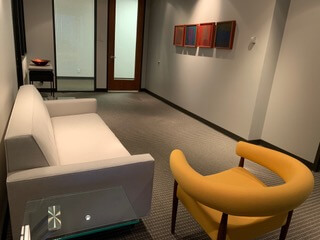Nanette Tashnek MSW, D.PSc
Thousands of children are affected by the symptoms of ADD, ADHD, Dyslexia, Autism, and various other types of learning difficulties. Many undiagnosed adults also seem to compensate in life because of such challenges. Learning challenges are known to affect an individual’s overall functioning in many ways. Social and family relationships are disrupted, academic or occupational goals may not be realized, and the inner emotional world is often compromised resulting in a poor sense of self. Other symptoms include angry outbursts, fear, confusion, vulnerability, isolation, and a lack of confidence.
Medication and traditional therapies have had limited success in treating such disturbances, Dr. Ahsen, founder of Modern Eidetics, has uncovered the root cause of learning problems. Through his Eidetic Imagery “picture process” the causes and symptoms of each individual can be successfully addressed and treated.
Learning is innately a pleasurable experience. It is therefore vital that the learning process be both empathic and nurturing. This nourishes the social interactions with healthy exploration and learning. It is under these conditions that the child’s self confidence and inherent abilities will flourish. If you see an image of a tigress with her cubs in the wild, you will see nature, nurture, learning, and fun.
Dr. Ahsen’s research discovered that children with learning disturbances are deeply sensitive, intuitive, intelligent, and imaginative. It is because of the sensitivities to outside circumstances that a neurological learning freeze in the brain can occur early in the life of the person. Some of the factors may include a trauma or parental conflict, or a negative experience with a sibling or teacher in the learning environment.
We all form visual images while learning. Knowledge comes from processing ideas through the venue of visual pictures. The Eidetic image is a particular and special type of visual picture in the mind that is connected to our emotions, sensations, and perceptions.
Recent research has determined that the brain may grow new cells daily.
Additional research has discovered a subset of cells in the brain called “mirror
neurons” which become activated in one individual by a particular action of another individual. Recently research found that autistic children have a decreased number of mirror neurons compared to the normal population. This may explain why they lack the ability to pick up social cues in the environment. Dr. Ahsen synthesized all these discoveries in his methodology and demonstrated how focusing on visual pictures can actually activate and stimulate mirror neurons and help new ones to grow. This process of activation and regeneration is especially helpful for the autistic individual in a setting where empathic social interactions are being demonstrated and can thus be imitated. Freedom from isolation and a relearning process naturally takes place.
The Eidetic Imagery Learning Model is useful for children and adults with learning and emotional challenges. It consists of a systematic step by step approach utilizing four pictures involving nature scenes. The educator and the individual go back and forth in a socially playful, active, and imaginative manner as they work through 30 steps uncovering various details in the pictures. This process is a journey of exploration where learning becomes an alternating exchange between leader and follower. The nature of any conflict may be explored and worked through and new learning occurs.


